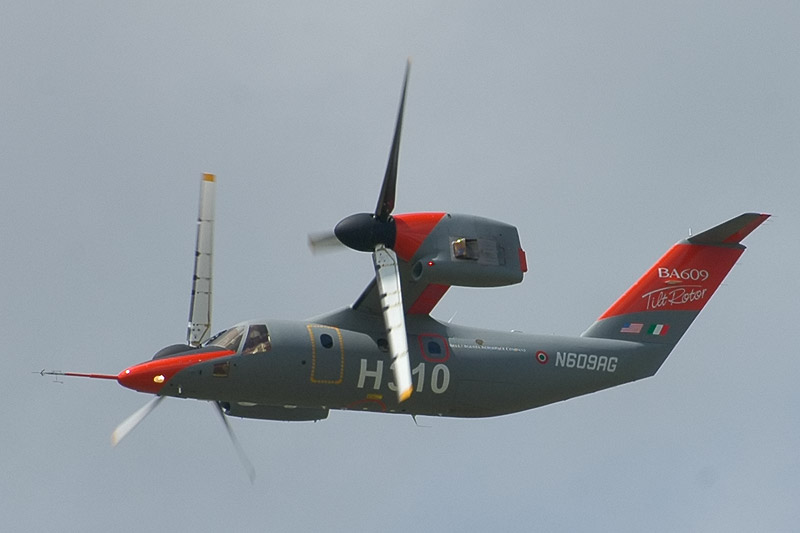Tiltwing aircraft was tried in the late 1950's. It was an interesting concept and it wettened the US, Canada, and Unite Kingdom's militaries on the idea of a VTOL transport that had longer range than helicopters. The idea was that the main wing tilted from a horizontal position to a vertical position, thus also tilting the engines and propellers. You could say that it was the predecessor of the tiltrotor. I always liked this concept and thought that it had potential. Apparently so did a lot of other folk.
 The slowed rotor concept was also an interesting concept. The idea was that a aircraft with a helicopter like rotors and wings and engines of a plane could take off vertically slow the rotor to reduce drag and increase range and speed for cruising and then land vertically. Actually the concept employed techniques of the autogyro for going from lift from the rotor to lift from the main wing. Before and after the second world war, aircraft companies ventured in this concept. The Fairey Rotodyne enjoyed some success, such as creating a world record in speed for the convertiplane (converting form helicoptery type to airplane type) category. It even had buyers before it was cancelled. McDonnell XV-1 was also an attempt at this concept.
The slowed rotor concept was also an interesting concept. The idea was that a aircraft with a helicopter like rotors and wings and engines of a plane could take off vertically slow the rotor to reduce drag and increase range and speed for cruising and then land vertically. Actually the concept employed techniques of the autogyro for going from lift from the rotor to lift from the main wing. Before and after the second world war, aircraft companies ventured in this concept. The Fairey Rotodyne enjoyed some success, such as creating a world record in speed for the convertiplane (converting form helicoptery type to airplane type) category. It even had buyers before it was cancelled. McDonnell XV-1 was also an attempt at this concept.Since the 80's Boeing has been trying its stopped rotor aircraft concept. They now call it the Canard Rotor/Wing. Like the slow rotor concept, the craft has wings, forward propulsion, and a main rotor. In this case they stop the main rotor and use it as a wing for cruise flight. The rotor is also used for vertical take offs and landings. I remember that they had trials in the 80's using a unique aircraft. The idea is tantalizing You can imagine a military fighter aircraft taking off vertically and landing vertically but flying with great precision and acrobatics. This concept promises to be less fuel intensive than the Harrier jump jet. Right now Boeing is marketing it as an unmanned aerial vehicle, but it was fully intended to have a pilot form the beginning.
Now, let's look at some conventional concepts.
Jay Carter has a small company called Carter Aviation Technologies. It's a aerospace research company that gives out licenses to production companies. Remember how the slowed rotor aircraft concept had some issues? Well it had a barrier. You can think of it akin to the sound barrier. This barrier is a little harder to grasp. You see in theory if you slowed down the main rotor, it produces less drag. It also produces less lift. So you have the main wings to provide that lift provided your going fast enough. The problem is that in that transition the rotor blades become unstable and can cause the craft to loose control. Jay Carter broke that barrier, and has a great document on this achievement in his website. It's called Mu-1. The result is that Carter Aviation Technologies has a slowed rotor aircraft design that is stable and works well. This is an important breakthrough in aviation. To think a small company solved a problem that big companies abandoned decades ago is a mighty feat. Carter Aviation Technologies has made a prototype aircraft they are calling the PAV that seats 4 people.
Sikorsky developed what we know as the helicopter concept. In this new effort for range and speed, they don't want to be outdone. They developed a concept that is very different than tiltrotor or slowed rotor. They call it Sikorsky X2. It's interesting because it's a real helicopter. It has counter rotating main rotor and a pusher propeller. The idea is that the counter rotating main rotor will provide stability where a normal single rotor would not at high speeds. They seem to have put in many technologies to create this concept. I've read where they want to sell it to the Military to provide support for the MV-22 Osprey during operations. You see conventional attack helicopters can't keep up with the Osprey in flight. Generals seem to still be learning how to employ the tiltrotor in combat. I fear that the X2 may use a lot of fuel, after all it's just using muscle to overcome obstacles.
There you have it. A variation of technologies to make VTOL (vertical take off and landing) aircraft faster and with longer range than the helicopter. We will see what happens in the future. Chances are that more than one concept will prevail. Incidently, if you think that tiltrotor is only for the military, think again. The Agustawestland AW609 is marketed for the business class aircraft.



No comments:
Post a Comment